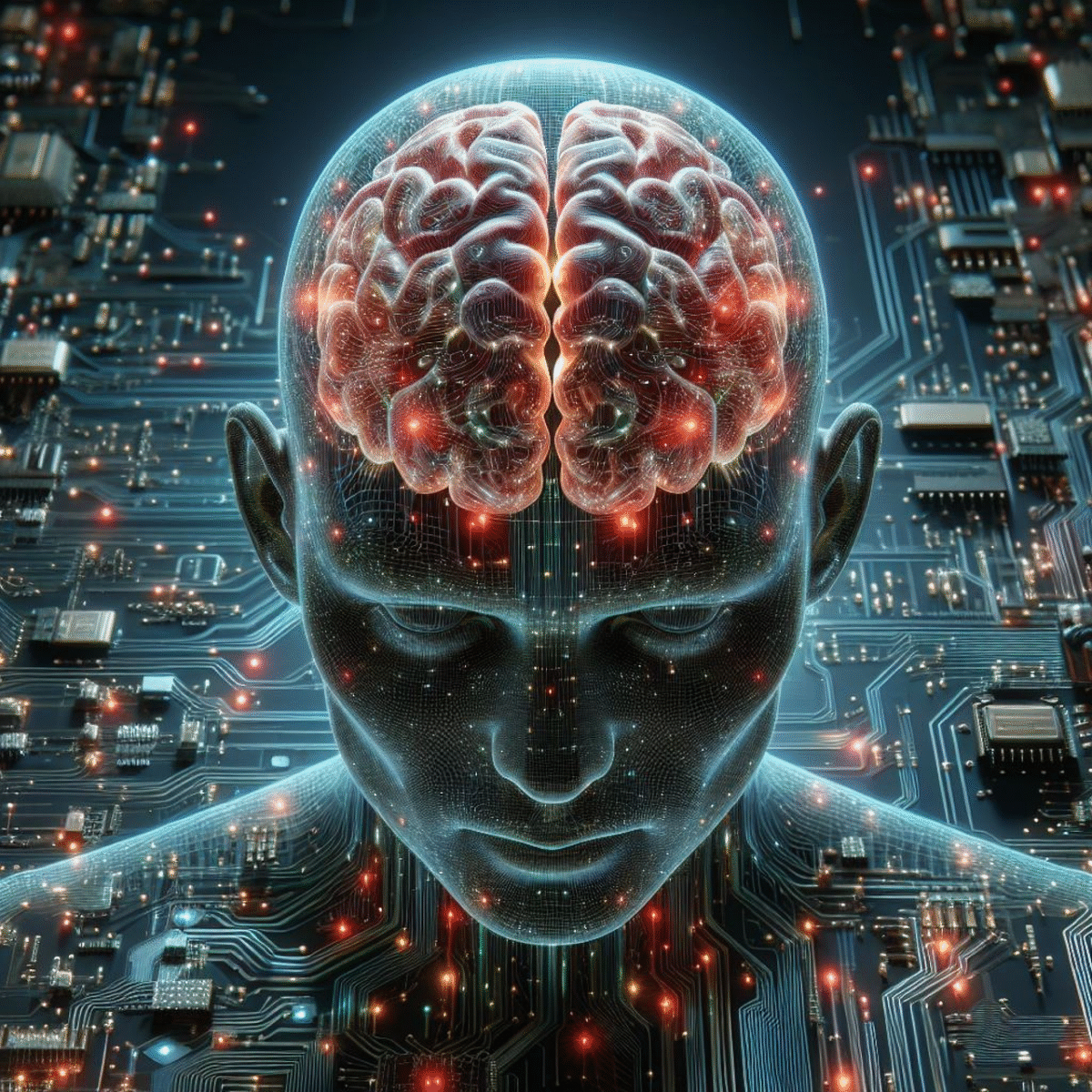Knowing Yourself
Know who you are and your purpose it makes you stronger and wiser. If you don’t know who you are you will be insecure, afraid, can’t get the job you always want evem if you are quilifies your self esteem is zero. Here I will explain couple of things so you can understand you are as clever and capable to achieve anything you want. You just have to try. The mind s the most complex part of our body.
Our mind is much better than a computer, the mind does million things in a nano second and we are not aware of but also the mind can let you down by giving you false information.
The mind can smell, feel, touch, laugh, cry, see, where to go , thinking, judging, hearing, sense of direction and all that while we are on the phone talking to a friend. The mind is close to a miracle actually is a miracle but we use it everyday so it means nothing to us we do not pay attention.
However the mind can play games, example we walk down the street and there is an accident taking lace. We both will describe the same accident slightly different. The colout of the hair I say blond you may say brown. A week after if we are to answer the same question our answer will be slightly dfferent, we may add one or two things extra. A month after we may describe the accident completely different

Functionalists say that the mind is what the brain does, which is a procedural view. You can have the same thought processes happen in very different physical media; an alien with an entirely different biology would still have the capacity for thought. Identity theorists, on the other hand, emphasize that the mind is the brain, and that’s all there is to it, says Starr.
But how do you get belief and thought out of a lump of brain?
“This is a particularly hard version of the question of how ordinary middle-size objects arise from the interaction of atoms and molecules,” explains Bennett. “People can see that if you were smart enough and had all the relevant information about atoms and electrons, you could understand how they become a car. But people find it particularly perplexing to see how the physical goings-on really could explain and generate conscious experience.”
“I myself am inclined toward the view that it’s not any more mysterious in the consciousness case than in any other,” adds Bennett.
But Laurent Dubreuil, professor of Romance studies and comparative literature, says that “whatever your position about dualism or physicalism, a mind is more than a brain. Not only are mental operations ‘extended’ beyond the nervous system and outsourced to books, objects, or computers—but they also occur ‘out there,’ especially when we share language.”
And where neuroscientists look for commonalities in the brain, thus characterising cognition as a repeatable, executed task, Dubreuil says there are situations where we assign things fluctuating meanings they don’t normally have, and create new ideas. To understand this requires more than a strictly cognitive framework, he says

I Think, Therefore?
Dubreuil’s new book, “The Intellective Space,” focuses on the distinction between thinking and thought. There is a process in our minds, he says, that bypasses cognitive structure, which he calls “intellection.”His extensive research in experimental psychology, literature and philosophy led him to conclude that “we say more than we think; we think more than we say.”
But is thinking an entirely neural process? One line of research in philosophy of mind, “embodied cognition,” examines how our problem-solving capitalizes on the fact that we have bodies and certain features of our environment available to us to work out our thoughts and to work through certain kinds of calculations.
“To try to understand the mind and what it does as this isolated computer stuck in our skull can be a distorting idea,” points out Starr, offering the example of people who use their fingers to count. “It’s really important to understand how the mind uses the body and the physical environment to think.”

Imagining Mary and Her Language
Philosophers often use thought experiments to explore ideas; one of the most famous ones involves a character named Mary:
Mary is a brilliant scientist of the future who lives in a room that only displays shades of black, white and gray. Mary has learned everything there is to know about the physical functioning of the world; she knows everything about how sensation works from the neurophysiological perspective. But can she know everything there is to know about the human mind, by virtue of knowing everything physical there is to know?
One day Mary is suddenly freed from the room and is confronted with a red tomato. And she learns something that she didn’t know before, which is what it’s like to have “red” sensation.
Some would say that this famous thought experiment teaches us that there are truths about experiences that can’t be learned by knowing all the physical truths. But is color a physical perception? Or is it language-based, as some have shown?
We know from research that language doesn’t completely work, says Dubreuil. When you translate poetry into multiple languages, it’s not the same. “For a long time in science people were interested in how language can stabilize meaning, but in the humanities people are also interested in how language destabilizes meaning,” he points out.
Only in the last 30 or so years has language even become a topic for cognitive science. Before then, says Dubreuil, “language could be reduced to syntactic structures and was considered only superficially different from what you were thinking, so there was no room to study language as an abstract movement in the mind. But most humanists would say what you are saying is not the same as what you are thinking.”
Starr’s research looks at how we manage to use language to get things done. “I see it as one of the most exciting ways of understanding how the mind works, which can’t be accomplished without taking seriously how language, the mind and the world interact,” says Starr. ““For example, I don’t want to know just how this one class of linguistic constructions work, I want to know how they’re used in a population and what that tells us about the mind and meaning.”
Starr uses language use and communication as a window into humans’ special psychological and social capacities. One aspect he’s focused on is the human ability to reason about what doesn’t exist; both what might have been and the consequences of what might have been.
“If you try and spell out in a scientific way what it is we’re doing, there are a lot of mysteries that pop up,” Starr says. “To build up a whole separate world and imagine the relations between different possible events in those worlds is computationally intensive. A lot of my work is looking at models developed in psychology and artificial intelligence and engaging them with philosophical and humanist questions.”
Language is unquestionably a hallmark of the human species; the flexibility and unbounded expressivity of our linguistic abilities is unique in the biological world, as Morten Christiansen, professor of psychology and co-director of the cognitive science program, notes in his forthcoming book, “Creating Language: Integrating Evolution, Acquisition, and Processing,” co-authored by Nick Chater. In the Cognitive Neuroscience Lab at Cornell, Christiansen aims to produce a comprehensive account of the evolution, acquisition and processing of language. While his approach is scientific, using methods such as neuroimaging, eye-tracking, statistical learning experiments, psycholinguistic studies, and computational modeling, he notes that the humanities offer key insights into the mind as well. Language, he writes, “is a product of cultural evolution and can therefore only be fully understood through collaborations across the humanities and the social and natural sciences.”

Mind & Machine
Technological metaphors have always been used to explain the mind: John Locke described an infant’s mind as a blank slate; Freud compared the mind to hydraulic and electro-magnetic systems. The current favorite metaphor is that the mind is a computer.
John Hale, associate professor of linguistics, works in the area of computational linguistics, part of the interdisciplinary enterprise of cognitive science, and works to explain the mind’s unique language-using abilities in terms of particular algorithms, data structures and computer architectures. To arrive at these explanations, he combines formal methods from logic and probability with empirical findings from linguistics, psycholinguistics and brain imaging.
“In cognitive science, the mind is viewed as a computer,” says Hale. “If we think of language comprehension as a program that runs in the brain, we can interpret the brain images as snapshots of this program’s execution.”
But viewing the mind as a computer raises plenty of issues. As Starr notes, there’s very little work possible in artificial intelligence or psychology that doesn’t connect with big, hard philosophical questions, which may explain why his “Mind & Machines” course is so popular. Since its inception, the course has grown from 15 students to 70; this semester, students from every college at the university have enrolled.
The course explores questions like whether it is plausible that brain cells compute and whether a computer could ever have a mind, beliefs, emotions and conscious experiences. “One thing that makes the class fun to teach is the continuing technological innovation that brings about machines and software that previous scholars couldn’t have envisioned,” says Starr.
Since taking the “Mind & Machines” class, Yosef Washington ’16 has thought about questions relating to social justice and artificial intelligence developments: if we can create something conscious and rational, do we afford that consciousness the same rights as humans? Washington notes that even calling such a consciousness “artificial” could be perceived as a microaggression by the sentient computer — what makes its intelligence less real than ours?
On Feb. 22, the College of Arts & Sciences brought together faculty members working on philosophy of mind in a Big Ideas panel, part of the New Century for the Humanities celebration. The event was held in the Groos Family Atrium in Klarman Hall and featured Bennett, Christiansen, and Dubreuil. Approximately 100 people attended, participating in a lively Q&A after presentations from the three panellists about their research.

Many neuroscientists study the brain of the lab mouse, in part with the hopes of understanding basic principles of the mammalian brain that could apply to our brains too. There’s a long history of rodent neuroscience, and here too, new techniques are opening a larger window onto the mouse’s kumquat-sized brain. Some of these methods allow researchers to eavesdrop on the activity of hundreds to thousands of neurons in the mouse brain.
“The concept of cell types as something tractable is fairly recent,” said Saskia De Vries, Ph.D., an Allen Institute neuroscientist. “We’ve learned a lot more about what the pieces are that make up the brain and how to access them. And now we’re starting to enter a new challenge, which is that instead of recording single cells, we’re now recording hundreds to thousands of cells at once. But a lot of our analytical techniques are still lagging. We’re suddenly working with really large datasets that might require more advanced math to really delve into and make sense of.”
Your brain’s origins
Smith and many other scientists believe that to fully understand the human brain, we also need to understand where it came from. The evolution of the human brain is probably just as much of a mystery as how it works in its current incarnation, and there are many teams of scientists working on this problem from multiple different angles.
But let’s take an even longer view. Smith considers the synapse, the direct connection point between two neurons, as a catalytic event in the evolution of complex multicellular animals. What did we do before synapses evolved? Organisms still had ways to send signals between their cells, using diffusion of small molecules over relatively larger distances. (Synapses themselves involve diffusion of molecular signals, but it’s a very directed and short diffusion through a tiny space between neurons known as the synaptic cleft.)
Before the evolution of the neuron and the synapse, which is thought to be more than 600 million years ago, animals still needed to sense their environments and react to changing circumstances, two major functions that our brains now orchestrate. They may have changed their behaviour to find more food or evade dangerous situations more readily than their neighbors. The molecules that enabled this early learning — the molecules that diffuse from one cell to many other cells — still exist in our brains today. They’re known as neuropeptides or neuromodulators, and while they’ve been somewhat overlooked in favour of the more tractable synapse, Smith believes they could hold important clues about how our brains work.
“There are hundreds of these molecules in our brains, hundreds of specific receptors for these molecules and very intricate networks connecting them. They’re still there,” he said. “It’s relatively easy to see a synapse if you have the right kind of microscope, but these other signals are more invisible. We missed a lot of them until much more recently.”

Allen Institude 2025
Can your brain understand itself?
Nearly 100 years ago, physicist Emerson Pugh famously said, “If the human brain were so simple that we could understand it, we would be so simple that we couldn’t.” It’s a clever quote but, on the face of it, seems to imply that human neuroscience is a futile endeavor. That doesn’t mean it, or neuroscience, is complete hogwash.
“Our brains are probably more complicated than any one human intellect,” Smith said. “But you also have to take into account the fact that we’re social creatures.”
Like most other scientists, modern neuroscientists don’t work alone. And they also don’t start their research in a vacuum. All of today’s experiments and data are built on the shoulders of the research and methodology that came before them.
“Is a singular human brain capable of understanding the brain as opposed to is a collection of human brains capable of understanding the brain? I think those are different questions,” de Vries said. “We learn a lot not just through the neural processes of learning, but through our interactions with other people and through conversations and collaboration. I do believe in the collective human ability to understand the human brain.”


The mind that thinks our thoughts is a pretty special place. But is it distinct from the brain? Is there, in fact, a soul directing our thoughts or are they determined entirely by the output of our biology? Could that mouse scampering through your garden be thinking deep thoughts, or are humans really special?
Before there was cognitive science, before there was neurobiology — before there was even biology — humanists have wrestled with these questions. Traditionally, philosophy of mind scholars in the West have fallen on one side or the other of the mind/body question.
Dualists would say that the mind would function just as it does whether or not it has a body. Dualists say that there is something special about the mind – it’s not just an incredibly interesting and complicated machine. Trees and tables and billiard balls can be explained by physics and biology, but you need to add something extra, some non-physical property, to explain human consciousness
On the other side are physicalists. Most philosophers today still find the physicalist explanation more compelling: that mental phenomena have a physiological or a neurophysiological basis. Even that simple statement, though, raises more questions. For example, if physicalism is characterized as everything physical, what does “physical” mean? It can’t mean tangible, since gravity is a physical force but it can’t be touched; rather, says philosophy professor Karen Bennett, it means that “everything is accounted for, or generated by, the kinds of things physicists talk about.” Physicists might not discuss chairs very often, but chairs are fully composed of the kinds of things physics talks about, like atoms and molecules.
“The behavior of the chair is accounted for by the behavior of the tiny bits; the existence of the chair depends on the existence of the smaller parts – the more fundamental level of reality,” she explains. Her current book project, “Making Things Up,” looks at the relations whereby more fundamental things determine or generate less fundamental things, and at what this fundamentality talk ultimately comes to.
Even among physicalists, there are two main schools of thought, says Assistant Professor of Philosophy William Starr.

Consciousness Conundrums
Philosophers address the questions we care about for which there is no specialized – typically empirical – methodology, says Derk Pereboom, Susan Linn Sage Professor in Philosophy and Ethics and Stanford H. Taylor ’50 Chair of the Sage School. In psychology, two of those questions philosophy addresses are, what’s the right model for cognition and how do we account for consciousness?
“Philosophy has an important role to play there, developing models to explain these questions,” says Pereboom.
The topic of consciousness has attracted considerable attention in recent years. It’s a familiar phenomenon, the most intimate thing we experience – that everything looks a certain way and feels a certain way to us. Yet ever since Sigmund Freud, it’s become common to believe that there’s a great deal of sub- or unconscious process going on beneath our awareness. As Pereboom notes, you might not be conscious of your anger toward your father but it’s still having an effect.
Sigmund Freud
But non-Western philosophers have approached the question of consciousness in very different ways, notes Yosef Washington ’16. As he learned in the course he took with Lawrence McCrea, professor of Asian studies, “some figures in Indian philosophy have argued that the sense of self that we call consciousness is viewed more as a witness than an agent — we’re more witnesses to conscious experience than actually agents who are causing things to happen.”
Pereboom’s last book, “Free Will, Agency, and Meaning in Life” explored this corollary question to the issue of consciousness, that of free will. “If our minds are just physical things, then our minds are governed by what our minds are made up of, which is determined by the rules of physics, so is there room for free choice?” Pereboom asks.
As he explains, if preceding events render succeeding events inevitable, then going back in time, the way the universe was before you were born fixes all your choices and actions. All of our actions would be causally determined. Would it then be right to blame and punish people for their bad choices, or would believing people are free and holding them morally responsible involve a mistake?
“If determinism is proved true tomorrow, then you’d know that the brain really does work like a computer, that it’s all just a system of inputs with specific, fixed outputs, and subsequently you’d have to accept that we have no free will at all,” explains Emma Logevall ’17, a student in Pereboom’s Topics in Philosophy of Mind: Free Will course this semester.

The Mind through Literature
One approach to understanding language and how it shapes (or has been shaped) by the mind is through the study of literature. Dubreuil’s current research rests at the intersection of cognitive science and poetry, what he calls the mental experience of poetry: how poetry is read and understood in the mind and how literature goes beyond simple cognition. “Literary text is a complex dynamic system and we don’t have tools in experimental science to fully address that right now,” he says.
As Dubreuil writes in an article in diacritics, “What is happening to us with poems challenges what we believe we know about cognition. It eloquently shows that there are more than rules and operations in thinking, but also that such excess can only derive—and derail—from routines, patterns, and automation.”
Christiansen and Dubreuil are planning to co-teach a seminar looking at the mind, cultural evolution and manifestations of mind in poetry and literature, as an outcome of and also as a reaction to cultural evolution.

Seeing Is Believing – Not
Nicholas Silins, associate professor of philosophy, examines the mind through questions relating to perception, drawing on the fields of philosophy, vision science and the theory of probability to answer how exactly we learn from our visual experiences of the world.
“The way you see the world can directly give you evidence that the world is the way it seems,” says Silins. “Think about how, when you have a bad headache, you can go straight from your pain to a justified belief you are in pain. Contrast that with using an emissions test to form a belief about the emissions rating of a Volkswagen diesel car, where you’d need to rely on a belief that a defect device didn’t kick in during the test to rig the result.”
Against a long, skeptical tradition in philosophy, Silins defends the view that our visual experiences are like the pain, not like the emissions test: they can directly justify our beliefs about the external world without our needing to rely on further beliefs. Some of our beliefs about the external world can then legitimately be taken as foundations for further enquiry, without depending on any further beliefs themselves.
Graduate student Lu Teng’s current project studies the epistemological implications of “cognitive penetration.” She’s interested in developing a view of when perceptual experiences are and are not evidentially valuable, drawing on current psychological research.
“We tend to think that perceptual experiences tell us about what the external world is like without being influenced by our own mind,” says Teng. “However, recent empirical research indicates that that’s not true: our beliefs, expectations and other mental states can causally influence what we experience.”
But if our perception sometimes results from our prior attitudes about the world, rather than being a neutral mirror to the world, this can call into question the ability of our perceptions to justify our beliefs, says Silins. For example, while it might be a good thing for a radiologist to see more in an x-ray than a patient, it could be tragic for someone with racial bias to see a wallet as a gun

Difficult to understand
Many fields of science are complicated, and of course anything under active scientific investigation is not fully understood. But the brain seems different. Extra complex. Extra mysterious. (Although it could be partly our brains’ own biases that tell us how special they are.)
“An electron is complicated. But when it comes to the brain, that simple statement acquires a whole new resonance,” said Allen Institute neuroscientist Stephen Smith, Ph.D. “It’s complicated enough to somehow explain all the richness of the human experience as we know it: All of our feelings, all of our subjective experience, all of human history, human art, human science. Wars, love, greed. The brain is at the root of all those things. Is it appealing to think that a simple machine, easy to understand, could explain all those things? I don’t think so.”
Scientists have known for centuries that the brain is the seat of human thought, but we’re still in the dark about how it works. There are… a lot of reasons for that. I asked four neuroscientists to expound on why we don’t yet understand the human brain, and what it might take to get there.
Your brain by the numbers
Let’s start with some stats. Your brain has 86 billion neurons, give or take — on the same order as the number of stars in the Milky Way. If you look at the synapses, the connections between neurons, the numbers start to get beyond comprehension pretty quickly. The number of synapses in the human brain is estimated to be nearly a quadrillion, or 1,000,000,000,000,000. And each individual synapse contains different molecular switches. If you want to think about the brain in terms of an electrical system, a single synapse is not equivalent to a transistor — it would be more like a thousand transistors.
To make things more complicated, not all neurons are created equal. Scientists still don’t know how many different kinds of neurons we have, but it’s likely in the hundreds. Synapses themselves aren’t all the same either. And that’s not even taking into account all the other cells in our brain. Besides neurons, our brains contain lots of blood vessels and a third class of brain cells known collectively as glia — many of which are even more poorly understood than neurons.
Scientists are making progress breaking those numbers down into something more comprehensible. At the level of individual brain cells, research teams at the Allen Institute and elsewhere are making headway into sorting the cells into different categories, defined as “cell types,” as well as being able to record electrical activity from living human neurons using creative new techniques.

Your brain in comparison
While there’s a growing movement in neuroscience to study the human brain directly, and not (solely) to make inferences about our brain from the brains of other mammals, there’s also a push from other researchers who feel neuroscience can be overly human-centric, to everyone’s detriment.
Robyn Crook, Ph.D., an associate professor at San Francisco State University and a 2021 Allen Distinguished Investigator. Crook studies the octopus brain, specifically how it controls the animal’s movement and how it perceives pain. Octopuses, which belong to a larger group of animals known as cephalopods, can be tricky to study in the lab. Because there’s such a long history of studying rodents in neuroscience and many other areas of biology, there are tons of tools and techniques available for mouse neuroscience. Scientists can even order genetically modified mice that someone else makes for them. Not so for the octopus.
“Currently, what we know about the brain tends to come from the same species, the same circuits, the same behaviours,” Crook said. “We know increasingly more about the brain, but always through the prism of these tractable, well-studied parts of the brain and parts of the animal kingdom. If you look at the diversity of animals, there are many more ways that brains have been selected and optimised throughout evolution.”
The octopus — and its brain — are fascinating. For an animal with a brain, they’re about as different from humans as it gets. Octopuses have about half a billion neurons, more than five times as many as the lab mouse. But unlike in our nervous systems, more than half of those neurons are in the octopus’ arms. The animals have incredible autonomous control over their limbs, similar in some ways to our own spinal cords, Crook said.
Cephalopods are capable of complex behaviours and learning. Octopuses have been seen to learn from watching their friends, mimicking behavior like opening jars to retrieve a treat; to play with toys; even to repeatedly turn out the lights by shooting jets of water that shorted the aquarium’s electrical system. Cuttlefish, another kind of cephalopod, demonstrate the ability to delay gratification — similar to the famous “marshmallow test” that not all human children can pass.
All that is to say that, while we don’t understand the octopus brain any better than we understand our own brains, Crook and others who study complicated non-mammalian brains believe that neuroscience needs to expand its definition of useful topics to study. Understanding the octopus brain isn’t just interesting in its own right, it could also help us understand broad general principles of large brains and animals that can learn and remember complicated behaviours — like us

Why don’t we understand the brain?
On a slightly more pragmatic note, Christof Koch, Ph.D., Chief Scientist of the Allen Institute’s MindScope Program, points out that our understanding might come not from (or not only from) our collective research, but from the powerful computers we’ve built to help that research.
“It may well be possible that while in principle we can sort of understand how the brain works, given its vast complexity, humans may never fully understand,” Koch said. “Maybe what it means to understand shifts from the kind of classical model of scientific understanding, like Newton’s apple or the double helix of DNA. The details of the brain may be way beyond human capacity and capability to understand, so we may more and more need to rely on computer models to give us correct answers without us knowing why those particular answers are correct.”
“If you never look beyond one group of animals, it’s hard to know if what you find is a fundamental truth about brain structure or brain function,” Crook said. “The brains that are present in octopuses and humans are obviously completely different. So if we find similar circuit functions, similar molecular underpinnings and similar anatomical structures, that are performing similar computations to produce similar behaviors, I think that says something really interesting about the constraints on our brain, and about the way that our brain has come to be.”

